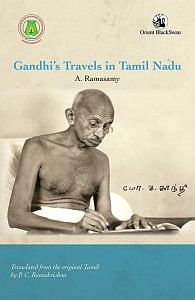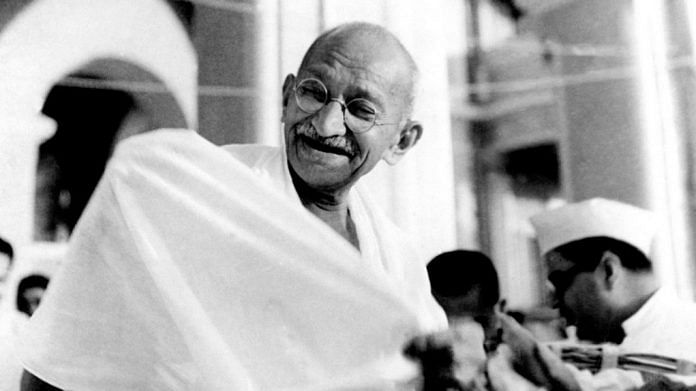That, among languages, Tamil, through its classicism and purity, captured the heart of the Mahatma, who was himself held as a symbol of purity and reverence, was not surprising. The fact that he started learning Tamil when he was 36, and while in South Africa, and continued to be its student even at an advanced age, must make every Tamilian’s heart swell with pride. In the midst of his unrelenting workload, and the innumerable problems that he had to encounter, he did not give up his efforts to learn Tamil—something that reflects the sweetness of this tongue and its ability to enthrall people.
The Tamil language has long fascinated scholars and intellectuals from other parts of the world, such as German-born philologist and Orientalist Friedrich Max Müller (1823–1900), George Uglow Pope (1820–1908), an Anglican Christian missionary and Tamil scholar who spent 40 years in Tamil Nadu and translated many Tamil texts into English, and Constantine Joseph Beschi (1680–1747), an Italian Jesuit priest, also known by his Tamil name of Viramamunivar. It was thus perhaps natural that it should attract the Mahatma. “In the ashram, we might have at times done work without Tamilians, but never without Tamil songs being sung,” Kaka Kalelkar said. Gandhiji’s reverence and love for the Tamil language was considerable.
What were his reasons?
Why had Gandhiji started learning Tamil? There are two views on this. One was that it was his way of showing his gratitude to the Tamils who had worked with him in South Africa. The other was that he wished to study the Tirukkural. Both were true, because Gandhiji
has himself said so, and it mattered not which preceded the other.
In the struggle in South Africa, no community made as many sacrifices as the Tamils—making light of their lives, losing all their wordly possessions, consenting to go to jail as to some banquet, and suffering untold tortures. Gandhiji wished to show them his deep gratitude. He believed that learning the mother tongue of the Tamils and conversing with them in their own language was the best way in which he could repay their selfless service. He said:
If not for any other reason, for my peace of mind and to express my undying gratitude, I am learning Tamil. As I keep studying it, I am appreciating its attraction more and more. It is a language of great beauty and sweetness. As I read on, I realise from its structure and content how it has shaped the wisdom and intellectual ability of so many Tamils over the years.
Gandhiji also said that, in later years, when he came to Thoothukudi to address meetings, he had stayed at the Seva Gram of Pandit Natesanar of Madras, and that he had wanted to be introduced to the study of the Tirukkural. Hence, it would be fair to conclude, looking at both these reasons, that Gandhiji had begun to learn Tamil in gratitude to the Tamils, and then, charmed by the language, wished to explore the treasures of the Tirukkural. Mahatma Gandhi, the ‘twentieth-century Valluvar’, being moved by the original Valluvar was quite natural.
Learning the language
Gandhiji started learning Tamil when he was in South Africa. Some Tamil books had been made available to him then. He also made considerable efforts to obtain G. U. Pope’s English translations of Tamil texts and his works in Tamil, and tried to study them. In South Africa, with his time divided between his work as a lawyer and public service, there was hardly any leisure, but that he could still devote some time to the study of Tamil showed his keen desire to learn, and his gratitude to the Tamils. This little time he spent on learning Tamil often came in the way of his writing for the Indian Opinion, despite which he did not discontinue his study. When Gandhiji went to London in 1906 with H. O. Ali, he had learnt the rudiments of Tamil.
In 1908, when he was jailed for the first time, he took some Tamil books with him, and studied them diligently in jail.
At the end of 1913, when he was incarcerated in Bloemfontein prison, he continued to study Tamil after attending to the jail duties given to him. “In Bloemfontein prison, I devote 8 hours to read and write, much of which time I [spend] in studying Tamil,” he had written to his son Manilal Gandhi in a letter.
Tamil teacher required
Gandhiji’s consistent keenness to learn Tamil was indeed remarkable. After he returned to India, he asked Srinivasa Sastri to select and send him a good Tamil teacher, and reminded him of that in his letter dated 16 July 1915. Further, the trouble he took to appoint a Tamil teacher in his ashram was seen in a letter to Maganlal Gandhi, who had come to Madras in 1915 with his wife, specifically to learn Tamil. He wrote: “See whether you could send a Tamil teacher here.
We could pay him the requisite salary. We should have no objection even if he wishes to stay outside the ashram. He must be simple in his habits and behaviour.”
Learning Tamil through mail
In later years, after his return to India, Gandhiji learnt Tamil from V. A. Sundaram and whoever else was near him at any given time. Those who have read this book would have known that it was his usual practice to buy Tamil books on his visits to Madras, or write to close friends like G. A. Natesan to send them. In addition to all this, he learnt Tamil through mail. For this his teacher was Rajagopalachariar.
The following correspondence between them on Tamil words is interesting.
Dear C.R.,
Received your affectionate letter. The Tamil lesson that you had
sent was very good. I do not think I will forget the words, ‘anbu’
(love) and ‘ambu’ (arrow). Does not the word ‘ambu’ also have
the meaning of lotus? What is the meaning of ‘anbudan’? Is the
last syllable ‘n’?
With rombu affection,
Bapu
Rajaji later corrected the ‘rombu’ as ‘romba’, meaning ‘much’. Gandhiji also felt that, in general, Tamilians were not too attached to their language. He had written about this on 20 October 1917. It was only a few years ago that Madras began to recognise the need for education in the mother tongue. More than the Tamils, the Telugu-speaking people are more keen about this. As the Tamils are fluent in English, they do not care to devote enough attention to make Tamil the language of instruction. In Telugu-speaking areas, education in English has not taken on as much. Hence, in those parts, they use their mother tongue more than the Tamils.
 This excerpt from A Ramasamy’s Gandhi’s Travels in Tamil Nadu has been published with permission from Orient Black Swan.
This excerpt from A Ramasamy’s Gandhi’s Travels in Tamil Nadu has been published with permission from Orient Black Swan.



